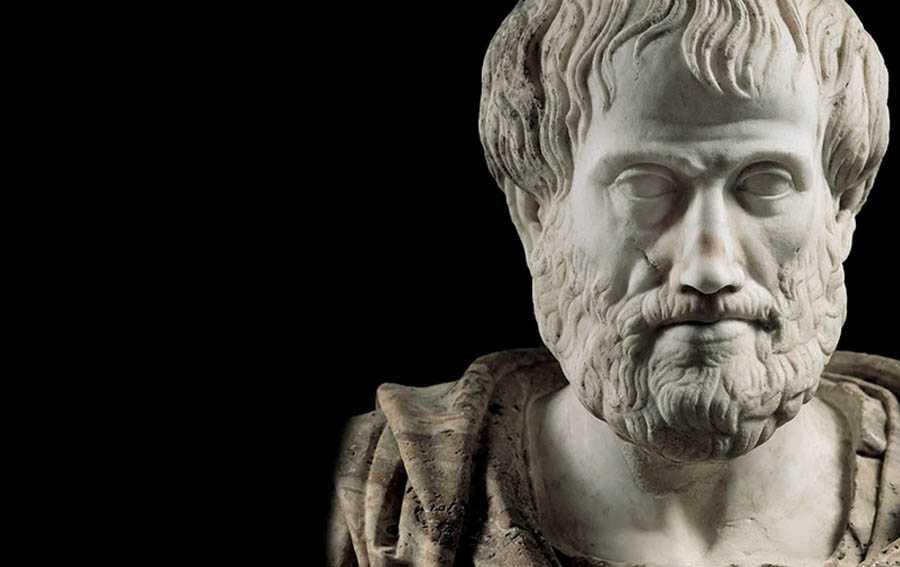Eight of Literature's Most Powerful Inventions—and the Neuroscience Behind How They Work
Curated from: smithsonianmag.com
Ideas, facts & insights covering these topics:
9 ideas
·5.15K reads
18
1
Explore the World's Best Ideas
Join today and uncover 100+ curated journeys from 50+ topics. Unlock access to our mobile app with extensive features.
Reoccuring Story Elements
Shortly after 335 B.C., Greek philosopher Aristotle wrote a short treatise where he proposed that literature was many inventions, each constructed from an innovative use of story.
He suggested that the elements in a story could plug into our imagination, emotions, and other parts of our being, solve problems, and enhance our mental function.
129
1.21K reads
The Plot Twist
The plot twist thrilled Aristotle when he discovered it.
- It supported his view that literature's inventions were constructed from story.
- It confirmed that literary inventions could have powerful psychological effects. Recent research shows that when a story turns unexpectedly, it can stimulate a self-transcendent or "spiritual" experience, increasing our overall sense of life purpose.
122
675 reads
The Hurt Delay
As recorded by Aristotle in Poetics, this invention's blueprint is a plot that discloses to the audience that a character is going to get hurt.
Aristotle hypothesised that this invention could stimulate catharsis, releasing the emotional tension after a traumatic fear. Modern research supports this idea. The hurt delay can increase our self-efficacy, a kind of mental strength that makes us better able to recover from our own experiences of trauma.
119
803 reads
The Tale Told from Our Future
Here, a narrator uses a future-tense voice to address us in the present. In the late 19th century, this invention was engineered into the foundation of the modern thriller, such as H. Rider Haggard in King Solomon's Mines or variants such as The Bourne Identity.
This one can have a potent neural effect: it boosts curiosity, immediately elevating your enthusiasm and energy levels.
117
455 reads
The Secret Discloser
The secret discloser activates dopamine neurons in the brain to convey the hedonic benefits of loving and being loved, making you more cheerful.
The 1952 love song by E. E. Cummings: "here is the deepest secret nobody knows/ I carry your heart (i carry it in my heart)"
Variants outside of poetry can be found in, for example, the novels of Charlotte Brontë.
120
500 reads
The Serenity Elevator
This element of storytelling focuses on turning around the satire's tool so that instead of laughing at someone else, you will smile at yourself.
This method can have analgesic effects, putting you in a serene state of feeling. A modern example would be Douglas Adams's The Hitchhiker's Guide to the Galaxy.
119
395 reads
The Empathy Generator
In this narrative technique, the narrator leads us inside a character's mind to see the character's remorse. For example, in Louisa May Alcott's Little Women, Jo March regrets accidentally burning her sister Meg's hair.
The invention's viewing of a character's private feeling of self-critique stimulates empathy.
117
352 reads
The Almighty Heart
This invention is a story told by someone with a human heart and a god's all-seeing eye. Homer first used it in The Iliad, but you can find it throughout more recent fiction.
The invention works by tricking your brain into feeling like you're chanting with a greater human voice. It stimulates an endocrine response that is linked to feeling brave.
118
379 reads
The Anarchy Rhymer
This helps with boosting your creativity. This innovation's blueprint is a rule-breaking element inside a larger formal structure, such as the Mother Goose's Medley nursery rhyme:
"Hey, diddle, diddle,
The cat and the fiddle,
The cow jumped over the moon
The little dog laughed
To see such sport,
And the dish ran away with the spoon."
115
389 reads
IDEAS CURATED BY
Spending a large amount of time with someone literally causes you to pick up their habits. Choose your friends wisely.
Holden P.'s ideas are part of this journey:
Learn more about problemsolving with this collection
How to build trust in a virtual environment
How to manage remote teams effectively
How to assess candidates remotely
Related collections
Similar ideas
Read & Learn
20x Faster
without
deepstash
with
deepstash
with
deepstash
Personalized microlearning
—
100+ Learning Journeys
—
Access to 200,000+ ideas
—
Access to the mobile app
—
Unlimited idea saving
—
—
Unlimited history
—
—
Unlimited listening to ideas
—
—
Downloading & offline access
—
—
Supercharge your mind with one idea per day
Enter your email and spend 1 minute every day to learn something new.
I agree to receive email updates

